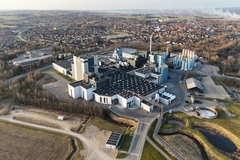
- Industry news
Industry news
- Category news
Category news
- Reports
- Key trends
- Multimedia
Multimedia
- Journal
- Events
- Suppliers
- Home
- Industry news
Industry news
- Category news
Category news
- Reports
- Key trends
- Multimedia
Multimedia
- Events
- Suppliers
Penford Sales Drop in Q4

Food Ingredients 4th quarter sales fell 4% from prior year. French fry processors slowed orders to balance strong 3rd quarter shipments. Second half fiscal 2010 sales were 8% above prior year.

15 Nov 2010 --- Penford Corporation, a leader in renewable ingredient systems for industrial and food applications, has reported that consolidated sales for the quarter ended August 31, 2010 were $63.0 million compared with $70.8 million a year ago. Consolidated sales for fiscal 2010 were $254.3 million compared to $255.6 million last year. Net loss from continuing operations was $3.1 million, or $0.26 per diluted share, for the quarter ended August 31, 2010 compared to net income from continuing operations of $1.3 million, or $0.12 per diluted share last year.
Food Ingredients 4th quarter sales fell 4% from prior year. French fry processors slowed orders to balance strong 3rd quarter shipments. Second half fiscal 2010 sales were 8% above prior year.
Food revenue other than coatings expanded 5% this quarter, led by double-digit growth in bakery, dairy and sauces applications.
The pet category continues to gain momentum with annual sales increasing by 20% from the prior year.
Unit manufacturing costs declined by 2% in the quarter. Full year unit costs were 8% lower.
Full year volumes rose by 8%, led by 20% growth in non-coating formulations. These products now represent about 50% of the total food business mix.
Industrial Ingredient 4th quarter sales declined $7.1 million and operating profit decreased $5.8 million on lower prices for core industrial starches serving the paper industry. Contract renewal discussions for calendar 2011 are underway.
Sales of Liquid Natural Additive applications grew by over 30% in the quarter.
Average ethanol pricing was comparable to the prior year during the fourth quarter.
Total industrial segment annual volumes grew 11%.
Penford reported that conditions for industrial starch markets are improving, as paper industry demand strengthens modestly and supplier capacity utilization rates remain high. Ethanol economics have improved significantly since the 4th quarter, and provide an attractive return in the current market dynamics. Cost containment programs will continue to improve the Company’s competitive position. Product development work and customer trial activity in both food ingredients and industrial specialty products remains strong into the new fiscal year.










